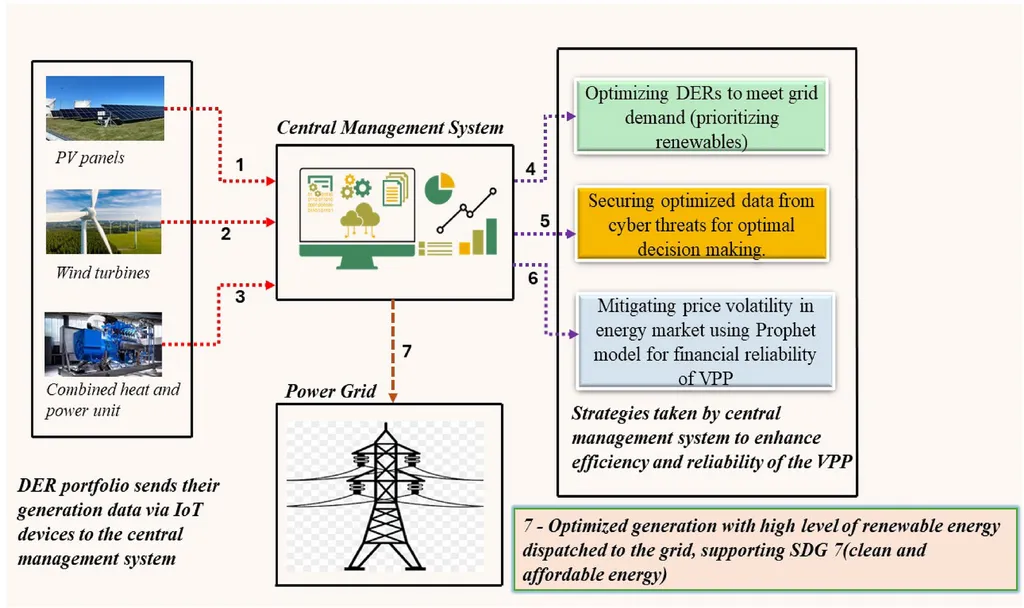In the rapidly evolving energy sector, the integration of diverse clean energy sources presents both challenges and opportunities. A recent study published in the journal *Energy Strategy Reviews* offers a compelling analysis of how virtual power plants (VPPs) can optimize the scheduling of renewable energy sources, including photovoltaic (PV) and wind power, while integrating electric vehicles (EVs) and energy storage systems. The research, led by Shaofan Li from the School of Automation Engineering at Northeast Electric Power University in China, provides a novel approach to balancing economic benefits, environmental sustainability, and customer satisfaction.
At the heart of this study is the FEDformer model, which forecasts the real-time output of PV and wind power generation, as well as residential power demand. According to Li, “The FEDformer model outperforms other models like LSTM, Transformer, Informer, and Autoformer by 5% in terms of mean absolute error and mean square error.” This enhanced accuracy is crucial for optimizing the scheduling of VPPs, which integrate multiple energy sources and storage systems to create a more flexible and resilient energy grid.
The proposed VPP model aims to maximize economic benefits while considering environmental sustainability, scheduling flexibility, and customer satisfaction. Li explains, “By integrating EVs and energy storage systems, we can improve user satisfaction through optimized charging strategies and dynamic pricing.” This multi-faceted approach not only enhances the efficiency of the energy system but also ensures that it meets the diverse needs of consumers and the environment.
One of the study’s key contributions is its methodology for classifying daily operational modes, which significantly reduces computational complexity and enhances overall efficiency. The research explores four scheduling strategies, progressing from single-objective optimization to multi-objective optimization. As the number of objectives increases, economic benefits gradually decrease, highlighting the trade-offs between multi-objective optimization and economic efficiency. This methodology offers a comprehensive and intuitive framework for decision-making in the energy sector.
The simulation results indicate that the proposed VPP effectively meets the established objectives and provides a comprehensive economic benefit analysis from various perspectives. This research has significant implications for the energy sector, as it demonstrates how advanced modeling and optimization techniques can enhance the integration of clean energy sources and improve the overall efficiency of the energy grid.
As the energy sector continues to evolve, the insights from this study will be invaluable for developers, policymakers, and energy providers. By leveraging the FEDformer model and multi-objective optimization strategies, the energy sector can achieve a more sustainable and economically viable future. This research not only advances our understanding of VPPs but also paves the way for innovative solutions that can shape the future of energy management.

